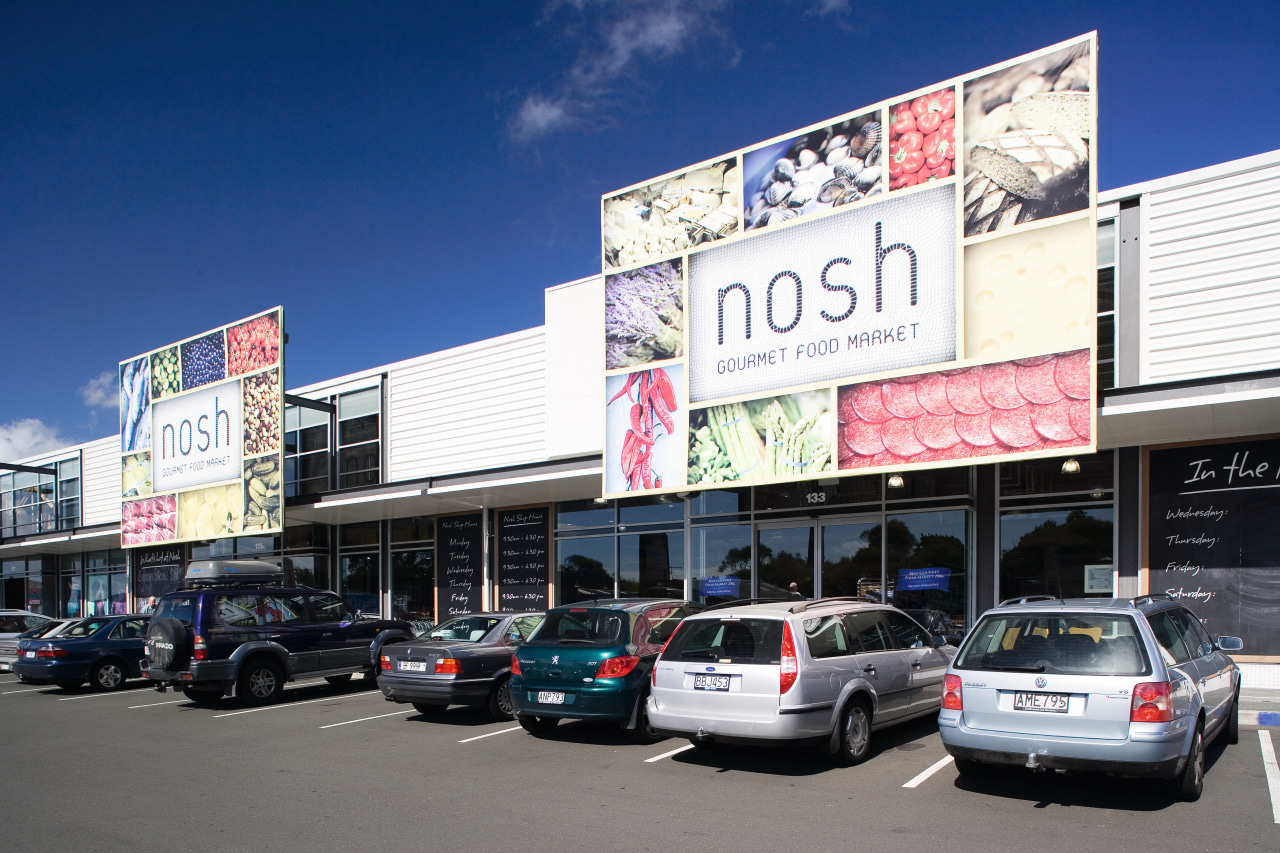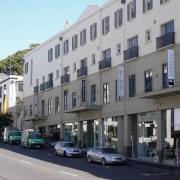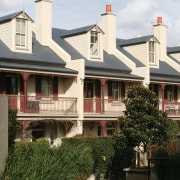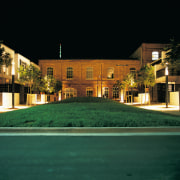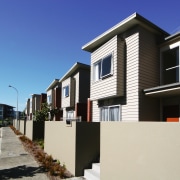brave new world
A marriage of aesthetics and functionality, urban design is the concept behind Auckland City Council's drive to take the city "from good to great"
Imagine a jigsaw. Not just any jigsaw, but one with no picture on the box. In fact, didn't even have a box. Worse still, there was no limit to the number of players, or consensus process as to the placement of each piece rather this opportunity was simply afforded to the highest bidder. Not pretty. Not clever. And certainly not the way to build a city with the potential of Auckland.
Encouraged by the climate of minimal government intervention prescribed by the 1991 RMA, the City of Sails risked becoming City for Sale through the following decade as market forces rapidly dictated its evolving shape and skyline. Ephemeral private-sector involvement in the city, rather than an investment in its long-term sustainability, was blamed for the incremental, fragmented growth of Auckland's built environment. Yet this was just the visible by-product of a financially-motivated, highly-competitive commercial property market.
As the second millennium drew to a close, it was clear that the bar needed to be raised in both the public and private sectors for Auckland to evolve as a world-class, fully-integrated city. Fortunately the symbiosis between public and private, aesthetic and economic, was recognised by both sides, leading to a spirit of strategic partnership that has since underpinned the revelation of Auckland's urban design.
Having formally identified the need for a more sophisticated approach to urban design in the 1999 Growth Strategy, Auckland City Council has since walked the talk. And, according to Auckland Mayor Dick Hubbard, this work has only just begun.
"Designing and shaping cities so that they are visually rich, full of life and vitality, but are safe and pedestrian friendly with a light footprint on the earth this is the challenge for urban designers. It is a complex multi-dimensional art. It is not easy. It takes time to get right. But when it works, you have great cities.
"This is one of my most important goals. We have strengthened our expertise, infused urban design across the council. Now we will start to make a difference."
Building on the success of the Mayoral Taskforce and Urban Design Panel two groups that fully utilise the expertise of the local developer, architect and investor markets Auckland City Council recently appointed an internationally-lauded urban design champion', Ludo Campbell-Reid, to spearhead this movement, and to provide leadership and vision for a city looking to evolve from good to great.
So what exactly is urban design? Urban design is not just about the beautification of a metropolitan area. Urban design is the science of making a place, not a building; of creating a city rather than just an individual component of it. Its key principles, based around sustainability and walkability', are adopted the world over, and have played crucial roles in the evolution of cities in every continent. However it is how they are applied within the context of local culture and heritage that allows cities to retain and develop their unique flavour. Chief among enemies to urban design is sprawl. And Auckland sprawls. The wider a city sprawls, the more drain is put on its resources, the cost of living increases through associated rates rises, and life is literally sucked out of its very heart. Therefore one of the most important visions for Auckland, and a theme that pervades the city's urban design manifesto, is for it to become more compact.
With compact comes another c' ... connected. This connectivity applies not only to how someone can get from A to B, but how one building connects to another. The incremental growth of Auckland as a city has created, in parts, a proliferation of individual buildings that don't respond to each other. What the city is now looking to achieve is a domino effect', where adjoining buildings correspond visually and functionally with one another, as if dominoes chained together by matching numbers.
Equally important in the creation of a modern city is how well it serves its populace, and how safe it is. How the public interact with the public environment is a key human' factor: the more people like the city they live in, the wider the benefits for its economy. Environmental sustainability also figures highly, as it is in the interests of all parties council, developer and consumer to create and live in a green city that looks to safeguard its future.
These four themes, to make the city compact, connected, human, and green, are at the heart of Auckland's urban design plans. Plans which incorporate everything from the city's public transport network to its CBD streetscapes.
Whilst Auckland now boasts a number of projects that highlight how a sophisticated approach to urban design can bring wider benefits, Ludo Campbell-Reid points to one particular project that provided a turning point, or indeed tipping point, for the city. Britomart.
"Britomart represents the events and processes that must be adopted to create a better city," he explains of a project that has breathed fresh life into a hitherto rundown part of the city.
The original plan for Auckland's new transport hub would have seen it placed almost 2km from the ferry terminal and CBD, with buses only able to get to within three blocks of the CBD. Not only does Britomart now provide an integrated transport solution within a single block of the CBD, it has lead to the regeneration of a critical part of the city.
"A purely functional alternative would have been to construct a bus barn', however this would not have helped make a city. Rather it would have provided Auckland with a vacuum," says Campbell-Reid. "Britomart opens up streetscapes and reinforces the heritage of the city, whilst the introduction of high-end retail into previously boarded-up buildings changes the dynamics and security of the entire area."
Indeed Bluewater Management's Britomart development embraces the urban design principles championed by Auckland City Council. Comprising 28 buildings, 17 of which are heritage protected, across a 58 hectare site, Britomart offers a high quality mix of retail, entertainment, residential, office, hotel and car-parking with a distinctly Kiwi accent.
To avoid uniformity and encourage variety, the combination of heritage and contemporary offices are let on a mix of short and long-term leases, whilst food and beverage offerings help bring life back to a previously empty part of town. The overall masterplan for the project dictates that each individual building will be designed by a different architect again avoiding the uninspiring possibility of a uniform look.
Whilst the masterplan for the 10-year project includes the retention of character buildings and the construction of mainly low-rise as opposed to tall towers, the spirit of the development's urban design is defined by the square that the new developments will surround. Modelled on the plazas of European cities such as Milan and Prague, the square is deliberately light and welcoming and encourages social interaction in a strategically important location at the heart of Auckland's public transport axis.
"Britomart reflects the sentiments of only the best' and world class'," says Campbell-Reid. "These are two mantras that we have adopted for the city, and sentiments that must underpin the architecture, culture, heritage, urban design and public transport sectors."
The evidence of these sentiments is becoming increasingly visible across the wider CBD, as the area benefits from significant investment from both the public and private sectors. As part of a 10-year action plan that commenced in 2004, Auckland City Council has invested $712 million for its revitalisation, $144 million of which will be achieved through a targeted rate, introduced for residential and non-residential ratepayers in the CBD. Of this overall figure, $374 million has been allocated specifically to projects around the CBD, including a streetscape and open space upgrade budget of $134 million. That the targeted rate is applicable only to CBD ratepayers is another example of the implicit partnership between the city and its people. These are the property owners who will benefit most from the strategic enhancement of the area
"Without a common direction, there was no sure-fire way of knowing where the CBD was headed," says Jo Wiggins, Group Manager Special Projects for the CBD. "Therefore a pooled strategy was formulated to create a premium business area that exhibits thoughtful urban design and a cohesive approach to the city's evolution."
This thoughtful urban design incorporates safety at the top of a list of considerations that includes pedestrianisation, connectivity, navigability, lighting and a sense of place. "This requires the creation of a built environment that reflects Auckland's natural environment and heritage," says Wiggins.
By mid 2008 the council aims to have significantly increased pedestrian access, thus improving the quality of life and enjoyment of its residents. Confirmation of this pedestrian focus is already visible throughout the city, notably on the heavy foot traffic areas of Queen and Quay Streets.
To create a sense of place to be enjoyed by a pedestrian population, quarter plans are being developed for the distinct character areas in the CBD, including Aotea Quarter, Victoria Quarter, Learning Quarter and the Waterfront. Site specific artworks and street furniture feature strongly in council's makeover of the city centre. However enjoyment at street level is by no means reliant on these new additions.
"One simple, yet important way of humanising a city is to avoid car parks at street level," explains Campbell-Reid. "These can easily be converted to restaurants or retail, which would not only increase the street level appeal of the city but would provide cheap construction alternatives within the constraints of the city plan."
According to Campbell-Reid, parking actually plays a huge role in the urban design plan. Not merely a revenue provider, car parks can be used as a magnet for weekend visitors if used effectively, which is why the council has engaged a Parking Group manager to look at what can be achieved. Markets and climbing walls are but two possible options of maximising the available space and adding to the city's cultural agenda.
Auckland's urban design is grounded by a series of strategically-located anchors', which range from the proposed Fred Graham sculpture to be placed outside the new BNZ building on the corner of Queen and Swanson Street, to the Vector Arena at Quay Park. Design-wise, the Vector Arena needed to fit within the wider Auckland cityscape, yet provide the operational functionality of such a facility. Whilst its roof and artwork provide the aesthetic anchor, its location so close to Auckland's transport hub removes the need for parking in a city looking to build itself around a public transport network.
Public transport, and the success the council must have in moving Auckland away from being a car-dominated city, is critical to the achievement of its overall urban design objectives.

"Public transport is a catalyst for the regeneration of the city, with the ability to connect spaces and streets," explains Campbell-Reid. "This includes how to make bus stops more people-friendly, what to do with the land alongside the arterial routes, beautifying corridors this is the coming together of urban design and transport to uplift the city's economy."
Key to this is the Central Transit Corridor. This will connect the northern busway with Britomart, the Learning Quarter, hospital and Newmarket. It will do so under another title however, as the council, keen to involve the public in this urban regeneration, is set to launch a competition to come up with something a little sexier-sounding.
At over $40m, the CTC represents Auckland City Council's next biggest investment after Britomart, and sees key urban design principles applied throughout the project. Indeed, it's not just the journey, but the journey to the journey that has to be considered, with pedestrian access, safety and sustainability all important factors in convincing Aucklanders that hopping on the bus or train is a viable choice.
Mirroring the spirit of partnership established between the council and the private developer sector, Stagecoach is reinforcing the public sector investment in the venture by unveiling a new fleet of buses for this route that meet Euro 5 standards the highest European Diesel standards.
Sustainable transport options require bold decision-making, confidence and the ability to educate without patronising a challenge for both Ludo Campbell-Reid and more specifically the council's General Manager for Transport, Stephen Rainbow. Auckland City Council is working with the parties most affected along the route to keep disruption to a minimum, and as elsewhere around the city, communicating to the public of its intentions with informative signage. However Rainbow is all too aware that "you can't make an omelette without breaking a few eggs."
As part of the drive, if you'll excuse the pun, towards a public transport, rather than car-dominated city, it is proposed that Grafton Bridge become a prioritised bus-lane Monday to Friday, 7am to 7pm, from 2008. Rainbow is aware not everyone sees the benefits, but says the number of alternatives the transport network can provide and the wider benefits for the city strengthen the council's argument and give the council the confidence to proceed.
Transport and urban design literally walk hand in hand. Rainbow points to a study in Brisbane which revealed that there would be a 15% increase in female usage of public transport, should the region adopt daylight saving. Therefore the council is not only committed to changing the perception of safety of public transport, but that of the CBD and wider city.
To achieve this integrated approach to urban design, any city would need the total buy-in of its private sector.
In addition to the Urban Design Panel and Mayoral Taskforce, the Property Enterprise Board provides Auckland's private sector with a voice, notably through the Property Council of New Zealand, and allows for "development with a vision."
The interest of the private developer sector in urban design is undeniably financial, however the means to the end mirror the objectives of the city council. As Connal Townsend, Chief Executive of the Property Council of New Zealand, explains.
"The urban design principles of creating something that is safe, clean and welcoming; open yet private; mixed-use; something that's funky', all lead to growing the design dividend. Our members are strategic investors in the city. Therefore to guarantee the long-term security and profitability of their investment in large buildings, the city has to be sustainable through good urban design. This feeds through to the financial bottom line."
The partnership between public and private sectors has been based on a memorandum of understanding' that has seen the council reward good design with a sensible, rather than dictatorial approach to planning. This has allowed for the development of some pioneering residential and mixed-use projects around the city, all exhibiting key urban design traits and allowing the city to combat sprawl through intelligent densification.
From Nigel McKenna's stunning Lighter Quay development on Auckland's viaduct, to the new Talbot Park Housing New Zealand project in Glen Innes, urban design principles have been adopted and applied to suit their particular location. These reflect the vision and passion needed to ensure the city meets its stated aim of moving from good to great.
Story by: Trendsideas
Home kitchen bathroom commercial design
Diving into nature
Personality plus
Classic looks, contemporary efficiency
